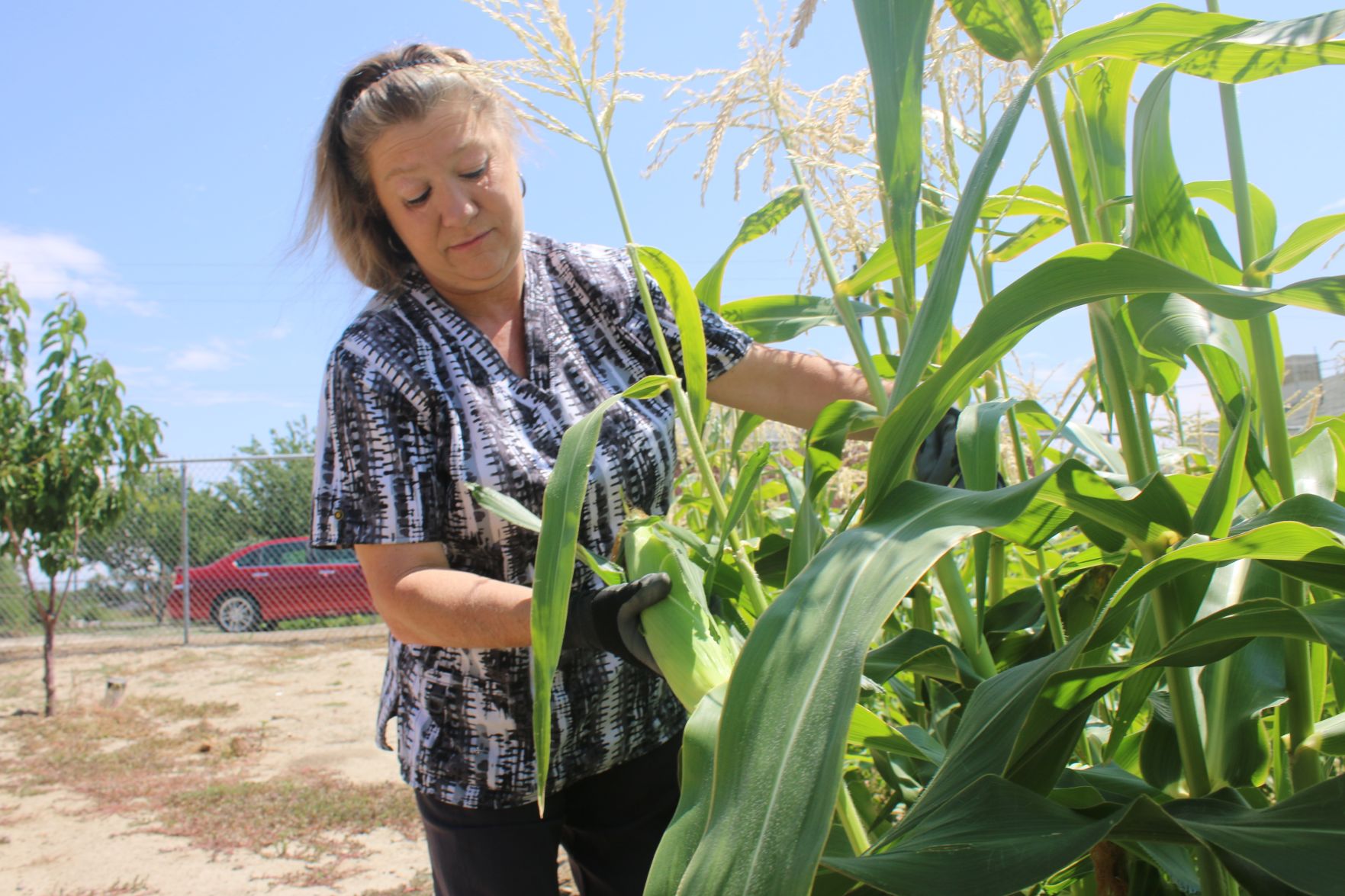When gruff snowstorms hit the Carbon County area more than seven months ago, folks were concerned about their houses.
For Jenai Davis, that included her greenhouse.
The Carbonville resident could only watch as three feet of the white stuff pounded the conservatory, leveling it.
However, the Community Garden in Price is doing better this year than last. Davis became one of four main volunteers at the garden, including Lamar Hussey, Jean Graves and Grant Daniels. Its produce is donated to the Carbon County Food Bank across the parking lot.
“They’re turning over new crops – and clients love their fresh veggies,” Aubrey Jaramillo tells Noreen Norton when Norton, who works in the adjacent building, asks how the garden is doing.
Volunteers have harvested 1,855 pounds of produce since June, Jaramillo tells the Sun Advocate. (The corresponding pace of 9,850 pounds this year would beat last year’s record — and be 89.4 percent higher than the 2011 total.)
Jaramillo is the food bank coordinator; she is quick to point numerous times to Davis, a gardener of more than 30 years, for details as to why. Not even 30 seconds into meeting Davis, she was rattling off several reasons:
“We’re growing sooner in the year.”
“The additives in the ground are different this year.”
“The rotation of the ground is a big difference.”
“We worked the ground more often.”
She adds that “pre-thought” was important; Hussey, gardening at 86, played a key role there, Davis says.
“At the end of the (harvest) season, we get together and talk about what it takes to run (the garden) smoothly,” she adds.
And with her repeated mention of a having set a cycle of cool and hot weather plants, it was easy to see why the volunteers are busy (they’re seeking more helpers).
“The pumpkins are turning already,” Davis remarks.
In another change, they have recently started a schedule of harvesting from 6:30 to 8:30 p.m. every Monday and going right back once the sun’s out again, from 5:30 to 7:30 a.m. each Tuesday.
Davis grew up with this stuff, being raised by a gardener father. And with her greenhouse, she ran a succesful enterprise selling fresh produce. “They call me the master gardener,” she remarks. The greenhouse will be rebuilt.
She believes “the universe brought me here for a reason.” She’s averaged five days per week volunteering.
The garden
The garden, which SEUALG’s Michele Kelley says is even seven years old, has been helped by SelectHealth grants the past two years. Nonetheless, food bank staff is laudatory of Davis. “Without her, our garden wouldn’t be as good,” warehouse manager Tyson Benally says.
Besides visitors to the Carbon County Food Bank, beneficiaries of the produce include recipients of Utah Food Bank services and even USU Eastern students, who are encouraged to volunteer (payment is produce) because test scores have been found to go up 10 percent when they do, Davis says.
That improvement comes through real work – as Davis says, “there’s a lot of hand tools,” motioning to many garden instruments lined up along the garden’s east fence.
The garden itself is a lesson in horticulture, with crops being planned routinely, with the cool/hot weather plant cycle and as seen with new rows of corn being planted strictly every other week. Its orchard, just behind the garden’s own greenhouse, grows several fruits, including peaches and pears. Preceding the orchard and greenhouse entering the garden from the south gate are vegetables such as potatoes, cabbages, onions, squash, carrots and green beans, accompanied by many corn stalks.
“We just pulled beets,” Davis adds.
There’s more besides the produce. In the middle of the garden is a rectangular area with wooden walls, built since last year, that will allow for folks in wheelchairs to serve. A couple of Intermountain Farmers Association-provided contraptions attracts bees to the garden, where they will pollinate the plants. The honey (for eating) and also wax (for shoes, gloves and leather material) from the IFA devices is supplied to humans as well.
Dell Cloward started the garden, Kelley adds. Matt Nortfleet led garden operations for at least two years, according to a Price Community Garden blog post.

